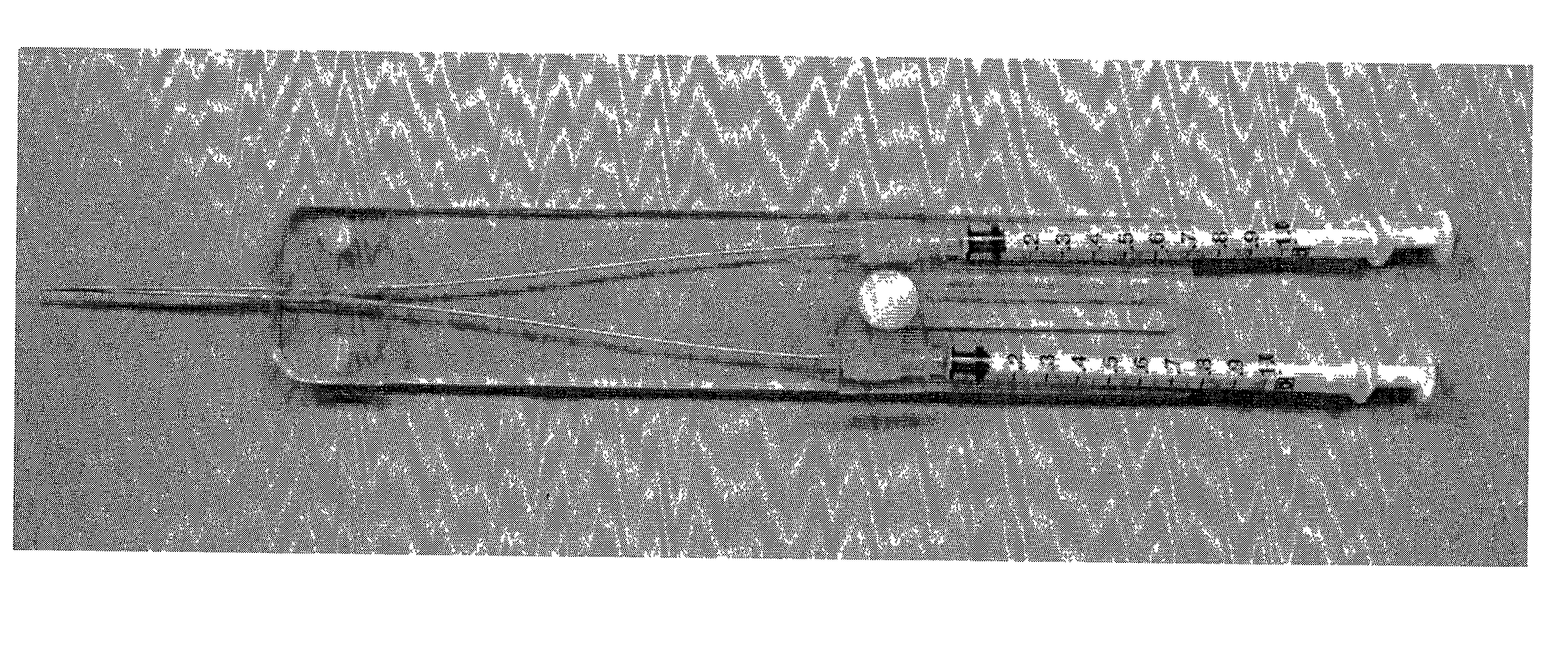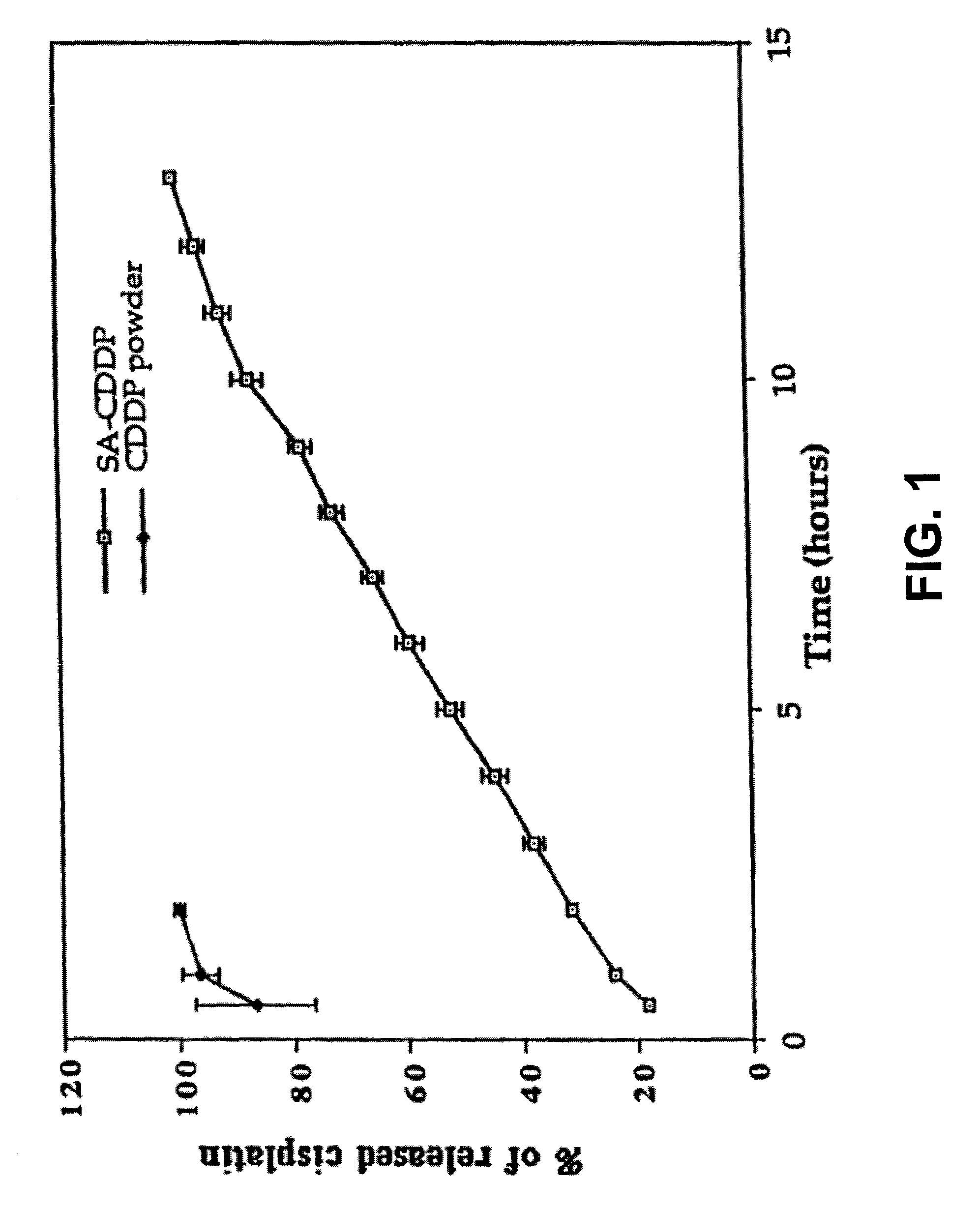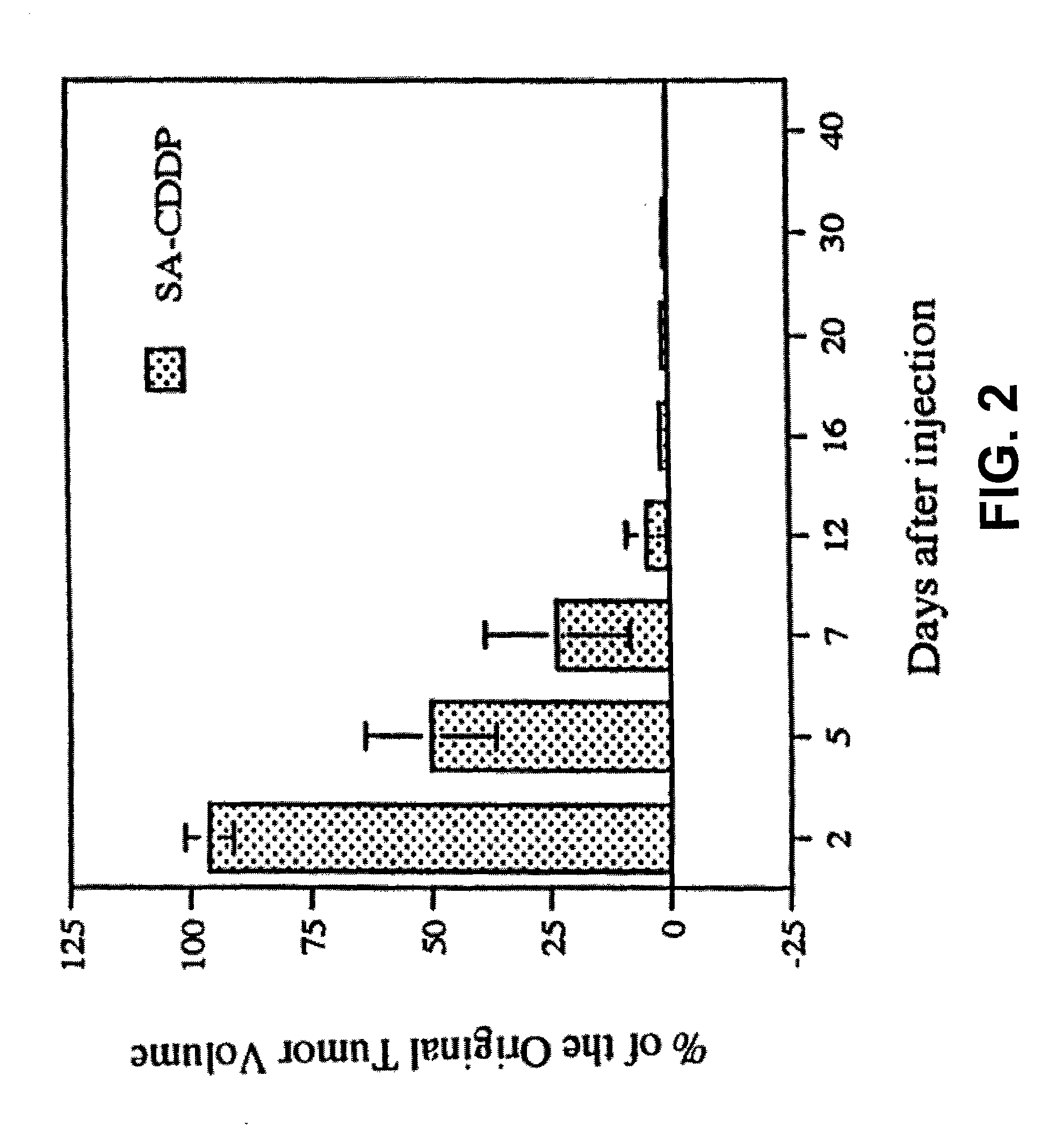Local regional chemotherapy and radiotherapy using in situ hydrogel
a radiotherapy and local region technology, applied in the field of disease therapy, cancer biology, cancer therapy, etc., can solve the problems of palliative treatment having an associated morbidity and mortality, severe dose-limiting toxic effects, poor prognosis,
- Summary
- Abstract
- Description
- Claims
- Application Information
AI Technical Summary
Problems solved by technology
Method used
Image
Examples
example 1
In vitro Slow Release of Cisplatin From Alginate Beads
[0279] To study in vitro slow release of an anticancer drug from a polymer, the anticancer drug cisplatin and the polymer sodium alginate were tested for slow release of the drug. Cisplatin-loaded alginate beads (SA-CDDP) were formed instantly and then incubated in phosphate-buffered saline (PBS) in tubes at 37° C. Cisplatin was completely released from the alginate beads in 15 hours, which is considerably slower than the release time (within 2.5 hours) of cisplatin powder only (control) (FIG. 1).
example 2
Intratumoral Infection of Sodium Alginate-Cisplatin (SA-CDDP)
[0280] Rats with mammary tumor (in the thighs, tumor size is 2.5×2.0 cm, n=5) were used in this experiment. SA-CDDP (5.4 mg cisplatin / ml) was made by suspending cisplatin in SA. A skilled artisan is aware of different parameters which affect dosages required to treat a particular tumor, such as size of the tumor, tumor type, and the like.
[0281] The SA-CDDP (0.1 ml; cisplatin dose was 3 mg / kg body weight) was injected directly into the tumors through 27 G needles. In a preferred embodiment, about 1 g SA is used per injection. Calcium chloride (8% in water) was then injected into the same place to form cisplatin-loaded alginate beads in the tumors. The tumor size was measured to determine the anticancer effect, and the blood chemical assay (blood urea nitrogen [BUN] and serum creatinine) were performed to detect renal toxicity. After injection, tumor volume decreased as a function of time (FIG. 2). No tumor relapse had occ...
example 3
Pharmacokinetic Evaluation of Hydrogel in Tumor-Bearing Rabbits
[0284] To test for sustained release assay of anticancer drugs, rabbits are xenografted with mammary tumor cells (VX-2). Polysaccharide / anticancer drugs along with a cross linker are administered intralesionally. At various time intervals, blood samples are collected. Analysis of anticancer drug therapy is performed.
[0285] A stability assay of radionuclide / polyamino acids matrix is performed. Tumor-bearing rabbits are administered polyamino acids chelated with isotopes. At various time intervals, blood samples are collected. Analysis of radionuclide therapy is performed.
PUM
| Property | Measurement | Unit |
|---|---|---|
| concentration | aaaaa | aaaaa |
| time | aaaaa | aaaaa |
| release time | aaaaa | aaaaa |
Abstract
Description
Claims
Application Information
 Login to View More
Login to View More - R&D
- Intellectual Property
- Life Sciences
- Materials
- Tech Scout
- Unparalleled Data Quality
- Higher Quality Content
- 60% Fewer Hallucinations
Browse by: Latest US Patents, China's latest patents, Technical Efficacy Thesaurus, Application Domain, Technology Topic, Popular Technical Reports.
© 2025 PatSnap. All rights reserved.Legal|Privacy policy|Modern Slavery Act Transparency Statement|Sitemap|About US| Contact US: help@patsnap.com



